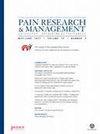晚期癌症突破性疼痛患者疼痛特征及相关因素的回顾性观察研究
IF 2.5
3区 医学
Q2 CLINICAL NEUROLOGY
引用次数: 5
摘要
目的通过回顾性观察研究,了解晚期癌症患者疼痛特征的现状,寻找影响突破性癌性疼痛(BTP)临床表现的潜在变量。方法18岁以上晚期肿瘤患者;在2018年至2020年期间,在姑息治疗病房登记了有可用数据的任何类型和III期或IV期癌症的患者。采用医院信息系统(HIS)的结构化电子提取表格收集人口统计数据和疼痛相关信息。背景痛控制良好,强度≤4(0-10)且持续时间>12小时/天,出现中重度疼痛一过性加重(≧5),且与背景痛明显区分者,视为BTP患者。采用Spearman相关法探讨疼痛评分与人口统计学特征之间的关系。将单因素分析中显著的因素纳入多元回归模型,探索与BTP相关的独立预测因素。结果798例晚期肿瘤患者,平均年龄56.7岁(SD = 11.84)。肺癌(29.95%)是最常见的癌症,疼痛(93%)是最常见的症状。超过一半(n = 428, 53.6%)的患者出现BTP。BTP发作的中位数为4次(IQR = 2,7,范围:1-42)。BTP的中位强度为6 (IQR = 6,7,范围5-10)。重度背景痛或BTP患者住院时间较长,症状较多。此外,更严重的背景疼痛与更高的日常生活活动有关。肌注盐酸氢吗啡酮是BTP发病的主要药物。年轻、背景疼痛、厌食症和便秘与BTP的表现独立相关。BTP疼痛强度与腹胀独立相关。症状数量是一个独立的因素,与BTP发作呈正相关。结论BTP导致预后不良,其表现因不同特征之间的相互依赖关系而不同。良好的背景疼痛控制和疼痛相关症状的评估是治疗BTP的必要条件。BTP应个体化治疗,尤其是老年患者的隐性疼痛。此外,仍然需要与管理方案有关的教育和培训。本文章由计算机程序翻译,如有差异,请以英文原文为准。
Retrospective Observational Study on the Characteristics of Pain and Associated Factors of Breakthrough Pain in Advanced Cancer Patients
Objective This study aimed to conduct a retrospective observational study to understand the status of characteristics of pain and identify potential variables influencing the clinical presentation of breakthrough cancer pain (BTP) in advanced cancer patients. Methods Advanced cancer patients over 18 years of age; diagnosed with cancer of any type and stage III or IV in the palliative care ward with available data were enrolled between 2018 and 2020. Demographic data and pain-related information were collected by using structured electronic extraction form from Hospital Information System (HIS). Patients who had well-controlled background pain with an intensity ≤4 on a 0–10 numerical scale for >12 hours/day, the presence of transient exacerbations of pain with moderate-severe intensity (≧5), and clearly distinguish from background pain were regarded to have suffered BTP. Spearman correlation was conducted to explore the relationship between pain score and demographics characteristics. Factors significant in univariate analysis were included in the multiple regression model to explore independent predictive factors associated with the BTP. Results Of 798 advanced cancer patients, the mean age was 56.7 (SD = 11.84) years. Lung cancer (29.95%) was the most common cancer, and pain (93%) was the most common symptom. More than half (n = 428, 53.6%) of the patients experienced BTP. The median number of BTP episodes was 4 (IQR = 2, 7, range: 1–42). The median intensity of BTP was 6 (IQR = 6, 7, range 5–10). Patients with severe background pain or BTP had longer hospital stay and more symptoms. Besides, more severe background pain was related to higher activity of daily living. Intramuscular injection of hydromorphone hydrochloride was the main medication for BTP onset. Younger age, background pain, anorexia, and constipation were independently associated with the presentation of BTP. BTP pain intensity was independently associated with bloating. Symptom numbers were an independent factor and positively associated with BTP episodes. Conclusions BTP resulted in poor prognosis, which has a variable presentation depending on interdependent relationships among different characteristics. Good controlling of background pain and assessment of pain-related symptoms are essential for BTP management. BTP should be managed individually, especially the invisible pain among aged patients. Furthermore, BTP-related education and training were still needed.
求助全文
通过发布文献求助,成功后即可免费获取论文全文。
去求助
来源期刊

Pain Research & Management
CLINICAL NEUROLOGY-
CiteScore
5.30
自引率
0.00%
发文量
109
审稿时长
>12 weeks
期刊介绍:
Pain Research and Management is a peer-reviewed, Open Access journal that publishes original research articles, review articles, and clinical studies in all areas of pain management.
The most recent Impact Factor for Pain Research and Management is 1.685 according to the 2015 Journal Citation Reports released by Thomson Reuters in 2016.
 求助内容:
求助内容: 应助结果提醒方式:
应助结果提醒方式:


